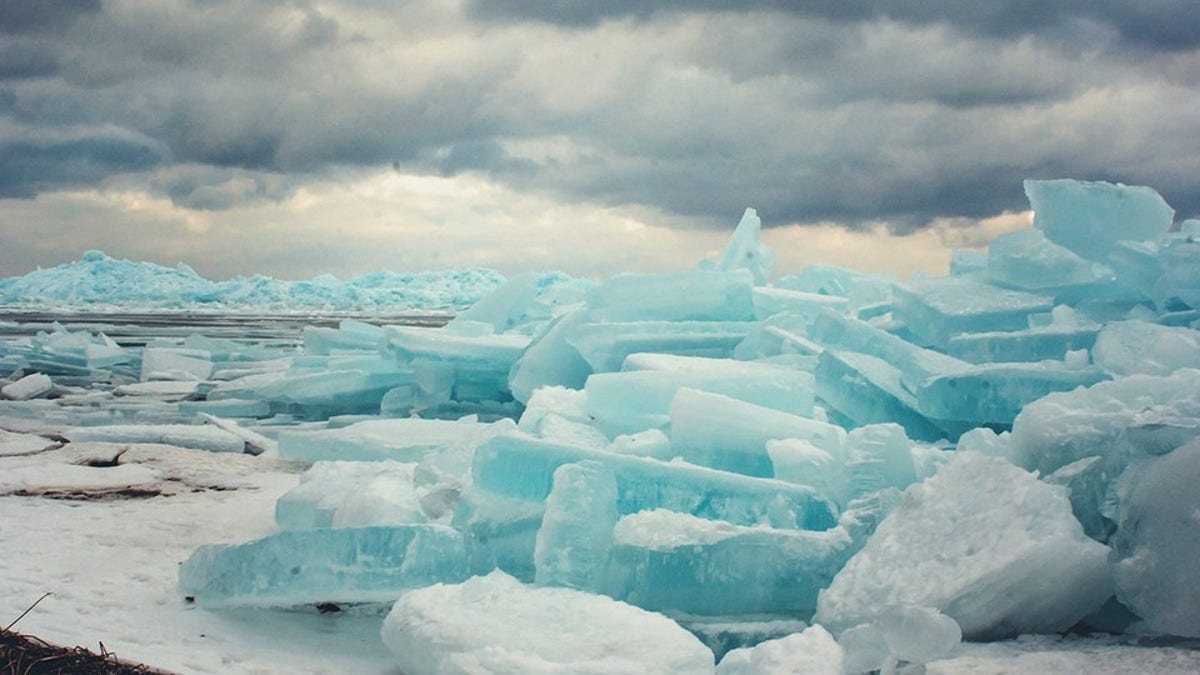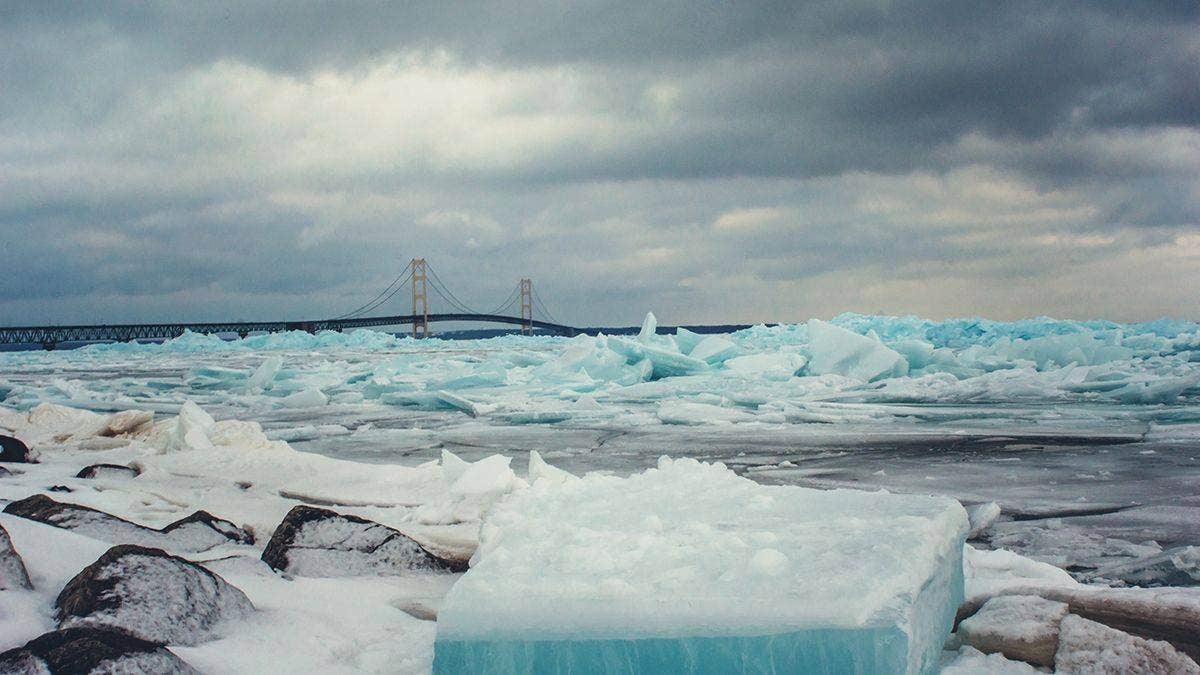
Photographer Tori Burley captures a stunning photo of blue ice forming under the Mackinac Bridge in Michigan. (trilliumandpine.com/Tori Burley)
In the middle of her work shift Sunday morning, Tori Burley received a text message from her father that gave her a tingle of excitement: "The blue ice is back!"
It had been seven years since Burley, a photographer who grew up in Mackinaw City, Michigan, spotted blue ice chunks along the Straits of Mackinac, the waterway that flows under the Mackinac Bridge, connecting two Great Lakes – Lake Michigan and Lake Huron.
"I was at work and I was like, 'I need this day to be done now,'" Burley told Fox News. "The second I could leave I grabbed the kids and I ran up to the lake to take pictures."
Burley had plenty of company, from photographers and locals alike.
Dozens of people lined up along the shore to snap photos and crawl near the big blocks of ice, some towering over 30 feet tall. A combination of wind and the current pushed the chunks to shore, where they piled up on top of each other to build "mountains" of ice.

Dustin Dilworth captures a photo of giant blue ice chunks forming along the Straits of Mackinac in Michigan. (Instagram/d3.imagery)
Dustin Dilworth, of Gaylord, Michigan, located about an hour south of the Mackinac Bridge, traveled to Mackinaw City on Monday to witness the rare phenomenon.
"In the Straits of Mackinac, these ice stacks can be as high as a three-story building," Dilworth told Fox News.
Pictures "never really do it justice," Burley added, as she described the beauty of the "light sea glass blue" color that reflects off the ice when the sun hits it just right.
"They can't capture the glow or size of it," she said.

Tori Burley, of Mackinaw City, Michigan, spotted blue ice chunks along the Straits of Mackinac on Sunday. (trilliumandpine.com/Tori Burley)
Blue ice occurs when snow buries and compresses a glacier, squeezing out air bubbles and allowing light to pass through to the water below. "The longer the path light travels in ice, the more blue it appears," the National Park Service explained in a post online.
"The ice appears so blue because it's compressed so tightly that all air has been 'squeezed' out of the ice, preventing the passage of light, absorbing the red end of the light spectrum," Dilworth described. "This allows only the blue hue to reach our eye."
The sight was so breathtaking, Burley went back around sunrise the next day to capture even more photos, though the ice had somewhat melted by then.
"This time of the year it can melt right away," Burley warned. "So that's the other challenge. It might show up, but you may get there just to see it wash back out with the wind."

A bald eagle fights off a raven as it perches near the top of a mountain of blue ice in Mackinaw City, Michigan. (Instagram/d3.imagery)
Dilworth, who's also a photographer, said he caught sight of the blue ice on a "cloudless morning," as a bald eagle flew overhead.
"Nature was active...as much as the photographers," he said.
"Nothing seems to compare to it," Burley added. "When you're standing next to this ice that's bigger than you are – it completely changes your perspective."




















